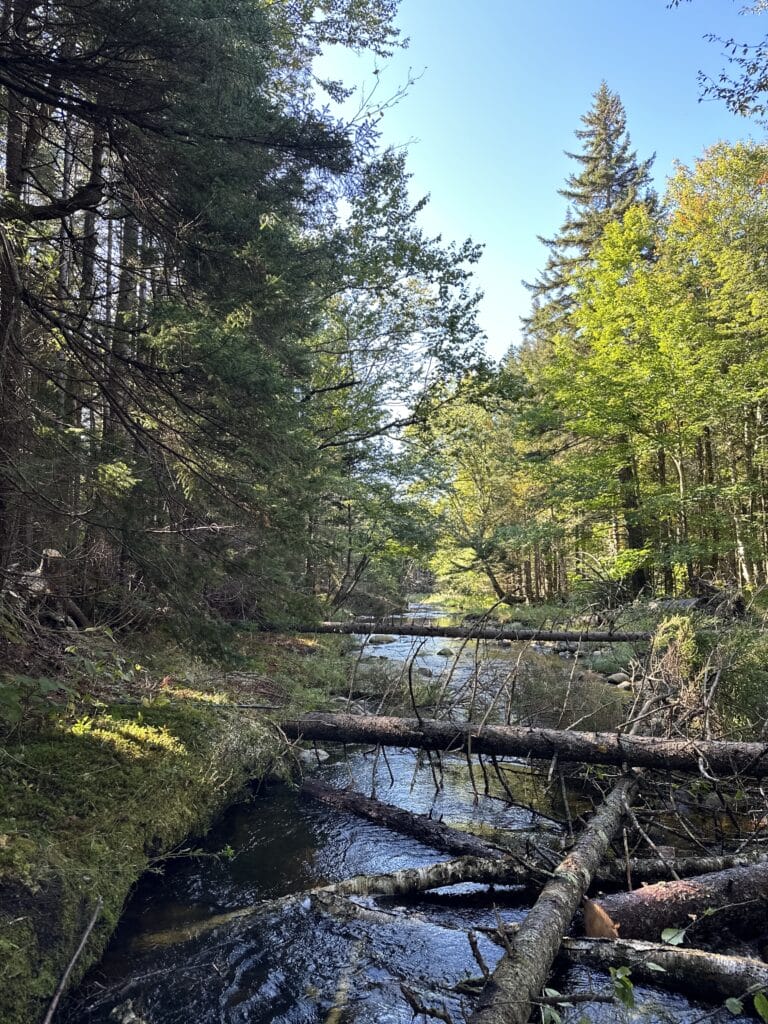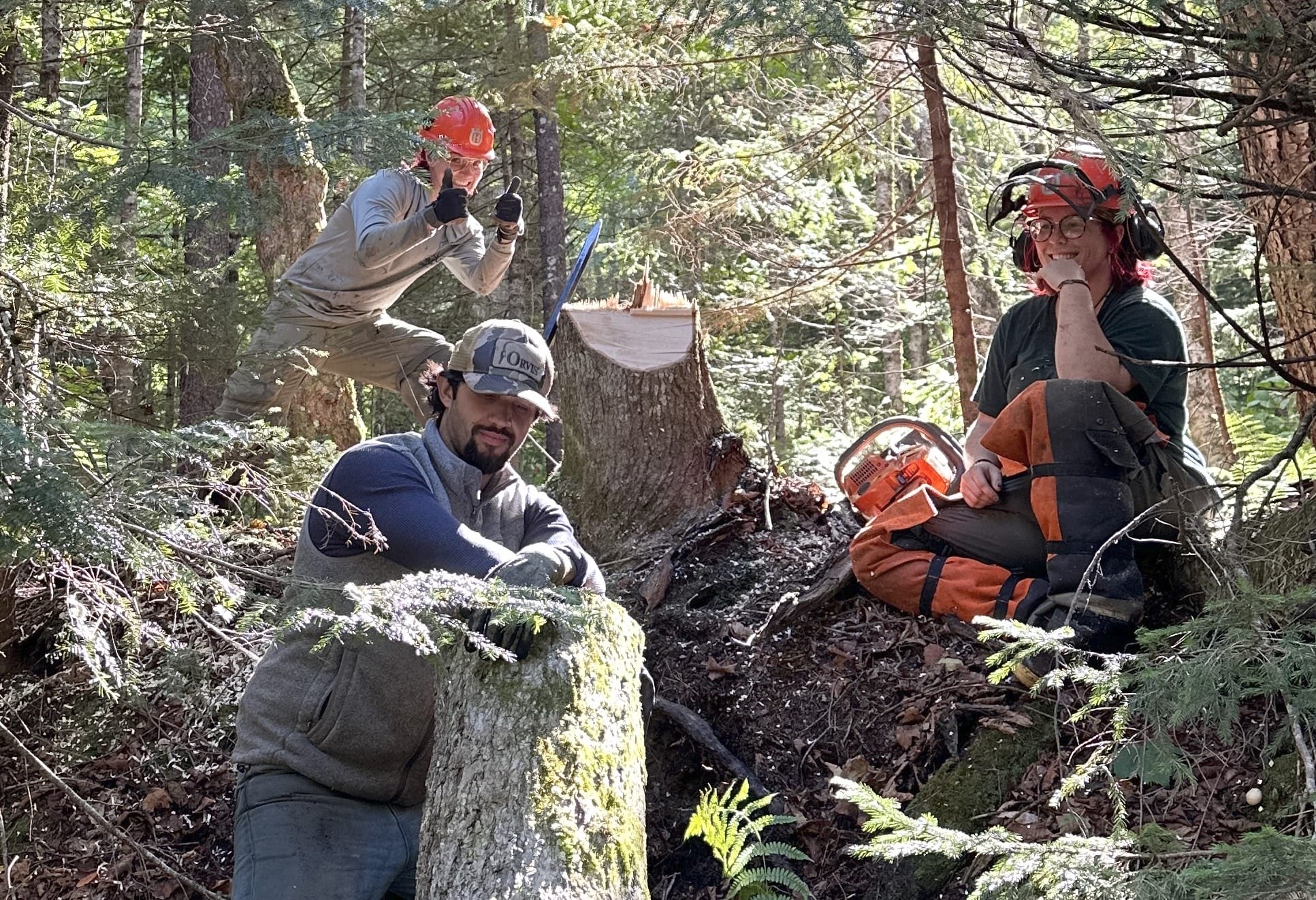Trout Unlimited restoration team members working in Vermont’s Green Mountains this summer faced many challenges. The team, which was primarily focused on strategically adding wood habitat to streams, frequently found itself dealing with a lot of high flows and intense…
Trout Unlimited restoration team members working in Vermont’s Green Mountains this summer faced many challenges.
The team, which was primarily focused on strategically adding wood habitat to streams, frequently found itself dealing with a lot of high flows and intense passing storms.
Despite the tough weather, the team was able to make great progress.
In total, two-and-a-half miles of streams were loaded with strategic wood additions, a post-assisted log dam and four beaver dam analog (BDA) structures.
The work was within the headwaters of the Deerfield River on the Green Mountain National Forest, funded through a national funding agreement between Trout Unlimited and the U.S. Forest Service.

“It was the whole, low-tech process-based restoration alphabet soup,” said Erin Rodgers, TU’s western New England project manager. “This is new and different for large wood in Vermont. The Forest Service gave us the flexibility to play with a range of methods and conditions in which we put the installations, including in stream sections with wider bankfull width, to create more complex diverse habitat for native brookies in an iconic fishery.
The crews accomplished all of the work using hand tools and minimally invasive methods.
Some “local residents” have already approved of the work
“Two of our beaver dam analogs have already been colonized by new beavers coming into the area,” Rodgers said. “We even have video.”
The work took place over several weeks, headed up by sawyers Erin Rodgers and Claire Wiegert leading a diverse team of seasonal staff. Several TU staff members from New York even crossed the border to help for a week, learning more about large wood installation methods.
This work will continue next year, moving downstream towards the Somerset Airfield with more post-assisted log jams, embedded large wood, and bank-attached structures to help provide habitat for the native trout in the river.



